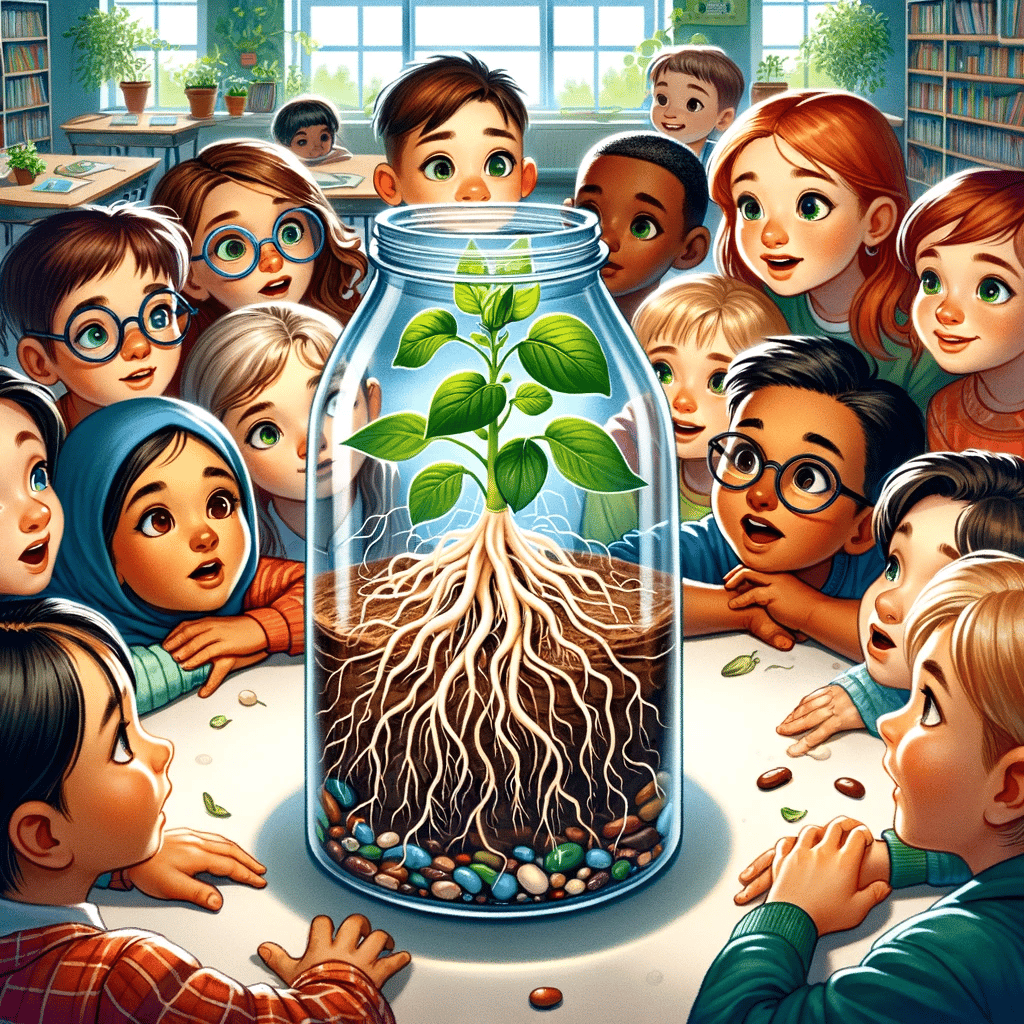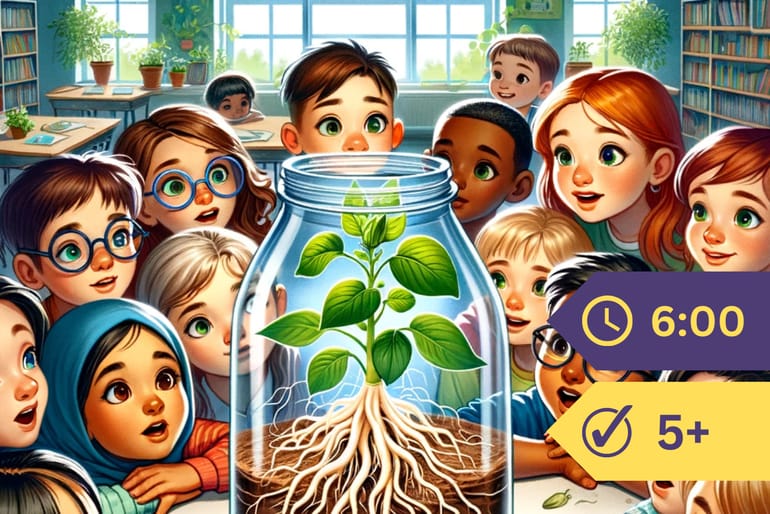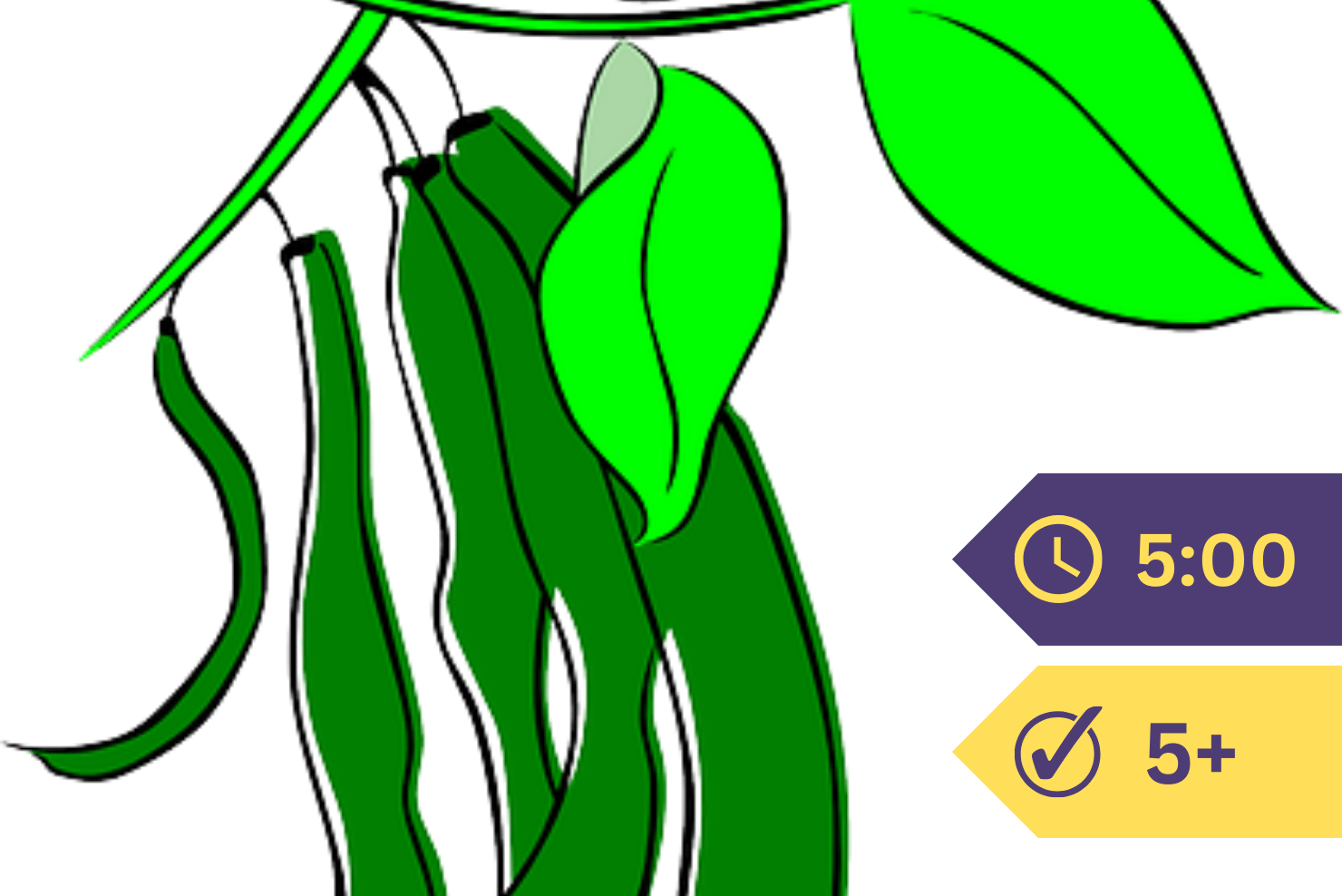Carefully pull up one of your bean plants and look at its root.
You see that the root grows downward from the lower part of the stem.

This bean root looks not unlike a bunch of dirty threads, some quite thick, others very thin. If you look at these thread-like roots in a good light, perhaps you may be able to see growing from them a quantity of tiny hairs.
Now, what is the use of such a root as this?
Surely some of you are able to guess at the object of this root, and I will help the others to the answer.
Give a firm though gentle tug to one of the larger plants,—one of those that are growing in the pot of earth.
Does it come out easily in your fingers?
Not at all. Unless you have been really rough, and used quite a good deal of strength, the little plant has kept its hold.
What holds it down, do you suppose?
Ah! Now you know what I am trying to get at. Its root is what holds it in place; and this holding of the plant in place is one of its uses.
Its thread-like branches are so many fingers that are laying hold of the earth. Each little thread makes it just so much the more difficult to uproot the plant.
I think you know already that another use of the root is to obtain nourishment for the plant.
These thread-like roots, you notice, creep out on every side in their search for food and drink. The water they are able to suck in easily by means of tiny mouths, which we cannot see. But the plant needs a certain amount of earth food, which in its solid state could not slip down these root throats any more easily than a young baby could swallow a lump of sugar.
Now, how is the plant to get this food, which it needs if it is to grow big and hearty?
Suppose the doctor should tell your mother that a lump of sugar was necessary to the health of your tiny baby brother, what would she do about it?
Would she put the great lump into the baby’s mouth?
You laugh at the very idea. Such a performance might choke the baby to death, you know quite well.
Perhaps you think she would break the lump into small pieces, and try to make the baby swallow these; but even these small pieces might prove very dangerous to the little throat that had never held a solid morsel.
“She would melt the sugar in water, then the baby could swallow it,” one of you exclaims.
That is exactly what she would do. She would melt, or dissolve as we say, this sugar in water. Then there would be no difficulty in its slipping down the little throat; for you know when anything is thoroughly melted or dissolved, it breaks up into such tiny pieces that the eye cannot see them. When you melt a lump of sugar in a glass of water, the sugar is all there as much as it ever was, although its little grains no longer cling together in one big lump.
And so when the plant needs some food that the little root hairs are not able to swallow, it does just what the mother does. It melts or dissolves the solid food so that this is able to slip quite easily down the root throats.

But how does it manage this?
No wonder you ask. A root cannot fill a glass with water, as your mother did. Even if it could, much of this solid food which is needed by the plant would not melt in water, or in anything but certain acids; for you know that not everything will dissolve, like sugar, in water.
If I place a copper cent in a glass of water, it will remain a copper cent, will it not? But if I go into a drug shop and buy a certain acid, and place in this the copper cent, it will dissolve almost immediately; that is, it will break up into so many tiny pieces that you will no longer see anything that looks at all like a cent.
And as much of this earth food, like the copper cent, can only be dissolved in certain acids, how is the plant to obtain them? Certainly it is not able to go to the drug shop for the purpose, any more than it was able to fill a glass with water.
Fortunately it does not need to do either of these things.
If you will look closely at the root of a plant that has been raised in water, you will see that it is rough with a quantity of tiny hairs. These little hairs hold the acid which can dissolve the solid earth food. When they touch this food, they send out some of the acid, and in this it is soon dissolved. Then the little mouths suck it in, and it is carried up through the root into the rest of the plant.
Would you have guessed that plants were able to prepare their food in any such wonderful way as this? It surprised me very much, I remember, to learn that a root could give out acids, and so dissolve the earth food it needed.







